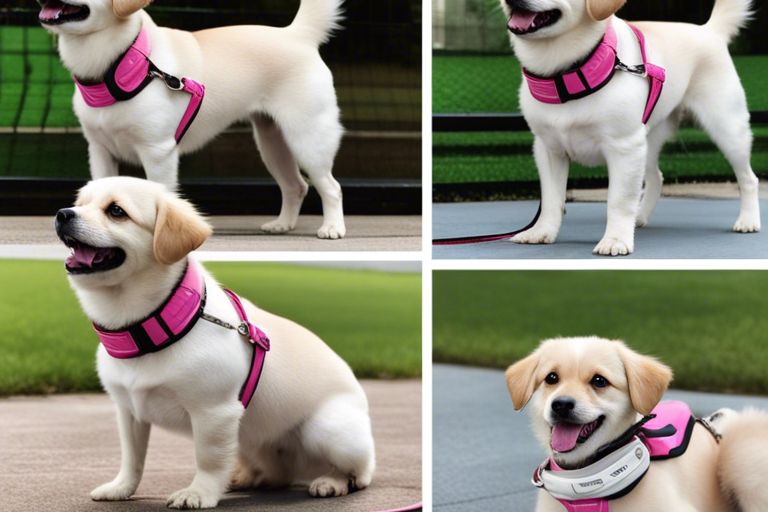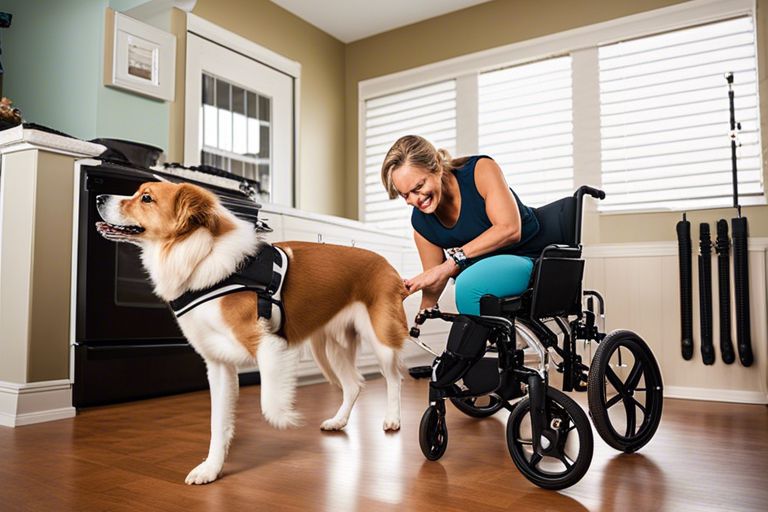Ensuring the proper training for your small dog is crucial to their safety and well-being. While it may seem challenging, leash and off-leash training is possible for small breeds with the right approach and consistency. I have trained numerous small dogs to walk comfortably on a leash and obey off-leash commands, and I can tell you that it requires dedication and patience, but the results are well worth the effort. It is particularly important to remember that small dogs can be at greater risk when not properly trained, as their size puts them in more vulnerable situations. However, with the right techniques and understanding of your dog’s behavior, you can successfully train your small dog to be both leash and off-leash trained.
Key Takeaways:
- Small dogs can be leash trained: Despite their size, small dogs can be trained to walk obediently on a leash with consistent training and positive reinforcement.
- Off-leash training is possible for small dogs: With patience and consistency, small dogs can be trained to be off-leash obedient, but it requires more time and effort than leash training.
- Early socialization is crucial: Starting leash and off-leash training at an early age and socializing small dogs with other dogs and people can significantly improve their training success.
Understanding the Small Dog Mentality
Any dog owner knows that understanding the mentality of their furry companion is crucial in successful training. When it comes to small dog breeds, it is essential to recognize that their behavior and response to training may differ from larger breeds. Small dogs have their own unique set of characteristics and behavioral traits that require specific attention and understanding in order to effectively train them.
Characteristics of Small Dog Breeds
Small dog breeds are typically known for their boldness and confidence, despite their size. They often display an independent nature and may be prone to assert dominance in their environment. Additionally, small dogs tend to be more sensitive to their surroundings and can easily become startled or anxious in unfamiliar situations. Understanding these characteristics is crucial in tailoring the training approach to meet the needs of small breeds.
Common Behavioral Traits and How They Affect Training
When it comes to training small dogs, it’s important to consider their tendencies towards stubbornness and defiance. Due to their independent nature, small breeds may be less inclined to follow commands if they don’t see the purpose or benefit. Additionally, small dogs are known for their yappy and vocal tendencies, which can make leash and off-leash training a bit more challenging. However, their loyalty and affection towards their owners can be leveraged to establish a strong bond and trust, making training more effective.
Leash Training for Small Dogs
Even small dogs can be trained to walk politely on a leash, but it does require the right techniques and consistency. Leash training is an essential skill for any dog, regardless of size, and it can help keep your small dog safe and well-behaved when out for a walk.
Essential Leash Training Techniques
When leash training a small dog, it’s important to start with a well-fitting harness or collar. This will ensure your dog is comfortable and secure while walking. Begin by getting your dog used to wearing the harness or collar indoors, so they associate it with positive experiences. Gradually introduce the leash, starting with short walks around the house, and then progressing to longer walks outside. Use positive reinforcement, such as treats or praise, to reward your dog for walking nicely on the leash. Consistency and patience are key to successful leash training.
Common Challenges and Solutions
One common challenge when leash training a small dog is pulling or lunging. This can be challenging due to the small size and strength of the dog. It’s important to address this behavior early on to prevent it from becoming a habit. Using a front-clip harness can help discourage pulling, as well as practicing loose leash walking techniques. Another challenge is leash reactivity, where the dog becomes agitated or anxious when on a leash. This can be addressed through desensitization training and positive reinforcement. Lastly, some small dogs may be fearful of the leash or resist walking altogether. In these cases, it’s important to take a gradual approach and be patient with your dog, using rewards to encourage good behavior.
By using essential leash training techniques and addressing common challenges in a consistent and patient manner, small dogs can become well-behaved on a leash.

Off-Leash Training Fundamentals
After successfully leash training your small dog, you may be considering taking the next step and training them to walk off-leash. Off-leash training requires careful preparation and advanced strategies to ensure your dog’s safety and obedience.
Preparing Your Small Dog for Off-Leash Training
Before starting off-leash training, it’s crucial to ensure that your small dog has mastered basic obedience commands such as sit, stay, come, and heel while on a leash. This sets the foundation for off-leash training and establishes your control over your dog in various situations. Additionally, I would recommend conducting initial off-leash training in a secure, enclosed area to minimize potential distractions and ensure your dog’s safety.
Advanced Off-Leash Training Strategies
When your small dog is ready to advance to off-leash training, there are several strategies that can help strengthen their obedience and responsiveness. One effective approach is to use long training leads or a lightweight but sturdy retractable leash to give your dog more freedom while still maintaining control. This allows you to gradually increase the distance between you and your dog, reinforcing their obedience without the restriction of a standard leash.
- Positive Reinforcement: Use treats, praise, and toys to reward and motivate your dog during off-leash training sessions. This reinforces their good behavior and encourages obedience.
- Consistent Training: Maintain a consistent training schedule and approach to reinforce off-leash obedience. Regular practice and repetition are essential for your dog to retain their training.
- Emergency Recall: Teach your small dog a reliable emergency recall command, such as “come” or “here,” to ensure they will respond promptly in critical situations.
- Distraction Management: Gradually expose your dog to different environments, distractions, and stimuli while off-leash to test and strengthen their obedience and focus.
Training Tips and Best Practices
Not all small dogs are well-behaved on a leash or off-leash, but with the right approach and training, it is possible to teach them to be well-mannered in both situations. Here are some tips and best practices to help you successfully train your small dog.
- Start training from a young age to instill good behavior early on.
- Use positive reinforcement techniques such as treats and praise to encourage good behavior.
- Be consistent with your training and practice regularly to reinforce good habits.
- Stay patient and understanding, as training a small dog can take time and dedication.
The How to Train Your Small Dog to Hike Off-Leash article provides detailed tips and techniques for off-leash training that can be adapted for leash training as well.
Positive Reinforcement Methods
When training your small dog, positive reinforcement is key. Use treats, praise, and rewards to encourage desired behaviors. For example, when your dog walks nicely on a leash or comes when called off-leash, reward them with a treat and verbal praise. This will help them associate good behavior with positive outcomes, making them more likely to repeat those behaviors in the future.
Consistency and Patience in Training
Consistency and patience are crucial when training a small dog. It’s important to set clear expectations and stick to them, as mixed signals can confuse your pet. Additionally, small dogs may take longer to learn certain commands, so it’s essential to be patient and understanding throughout the training process. Remember, training takes time, but the results are well worth the effort.
Can small dogs be leash and off-leash trained?
Hence, through proper training and consistent practice, small dogs can certainly be leash and off-leash trained. It is important to start with leash training to establish good walking behavior, and then gradually transition to off-leash training in safe, controlled environments. It is crucial to remain patient and consistent in the training process, as well as to use positive reinforcement to encourage desired behaviors. With dedication and commitment, small dogs can be successfully trained to walk both on and off leash.
FAQ
Q: Can small dogs be leash and off-leash trained?
A: Yes, small dogs can be trained to walk on a leash and be off-leash trained with the right approach and consistency.
Q: What are some important considerations when leash training a small dog?
A: When leash training a small dog, it’s important to use a lightweight, properly-fitting harness or collar to avoid putting too much pressure on the dog’s delicate neck. Additionally, positive reinforcement methods should be used to encourage desired behaviors during walks.
Q: Is off-leash training suitable for small dogs?
A: Off-leash training can be suitable for small dogs, but it’s crucial to ensure their safety and obey local leash laws. It’s important to gradually introduce off-leash training in safe, enclosed areas and use a reliable recall command to keep the dog under control when off-leash.


